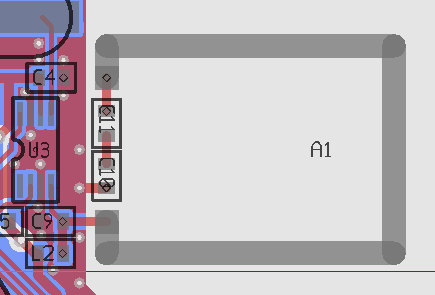Tool/software:
Hello,
I'm working on migrating an old 869 MHz transmitter based on the ATA8403C TX chip to a CC110L-based design.
The ATA8403C uses a rectangular loop antenna, like this:


Loop dimensions: 18 x 13 mm.
As the CC110L has a balanced RF output, I'd like to use the same or similar loop antenna for the new design, also because it is really compact. Also, I understand that such a loop antenna is relatively immune to changes in capacitive loading due to environmental influences (e.g. someone holding the transmitter in their hand).
However, searching for CC110L + loop antenna turns up no circuit examples; every circuit example I can find employs a balun circuit, with a single-pole 50 Ohm antenna design.
Question: what filter circuit is advisable to connect the loop antenna to the CC110L RF_P and RF_N outputs? I understand that some filtering is necessary to avoid harmonics and keep in compliance with RF regulations.
Additional information: I am not exactly an RF guru, so my apologies if this question seems trivial to people with more knowledge on this subject matter. And oh, I have access to RF measuring equipment through a colleague of mine, so I can do some basic checking and tuning if necessary.
Thanks for any thoughts,
Richard

